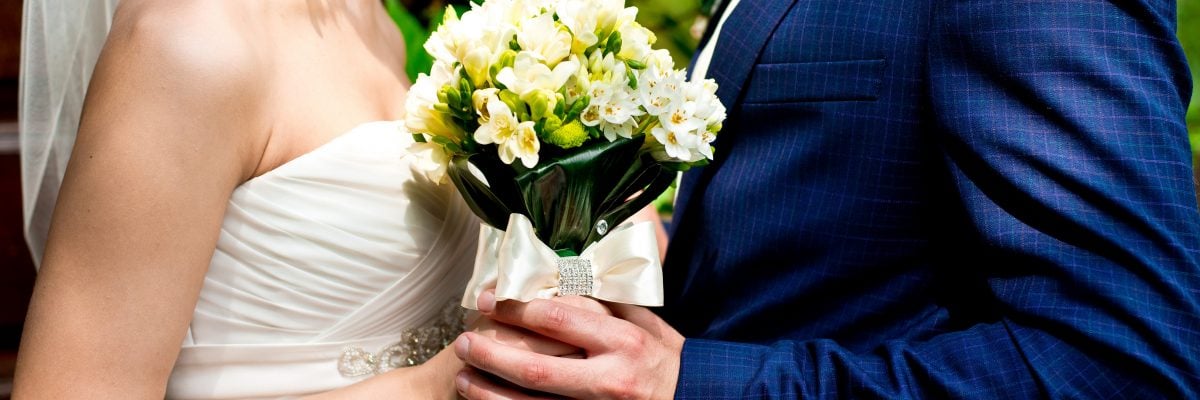
The Thirty-Second Sunday in Ordinary Time, Cycle A
Jesus told his disciples this parable:
“The kingdom of heaven will be like ten virgins
who took their lamps and went out to meet the bridegroom.
Five of them were foolish and five were wise.
The foolish ones, when taking their lamps,
brought no oil with them,
but the wise brought flasks of oil with their lamps.
Since the bridegroom was long delayed,
they all became drowsy and fell asleep.
At midnight, there was a cry,
‘Behold, the bridegroom! Come out to meet him!’
Then all those virgins got up and trimmed their lamps.
The foolish ones said to the wise,
‘Give us some of your oil,
for our lamps are going out.’
But the wise ones replied,
‘No, for there may not be enough for us and you.
Go instead to the merchants and buy some for yourselves.’
While they went off to buy it,
the bridegroom came
and those who were ready went into the wedding feast with him.
Then the door was locked.
Afterwards the other virgins came and said,
‘Lord, Lord, open the door for us!’
But he said in reply,
‘Amen, I say to you, I do not know you.’
Therefore, stay awake,
for you know neither the day nor the hour (Matt. 25:1-13).
Your homilist was serenely preparing using the usual sources, especially St. Thomas Aquinas’s commentary on St Matthew’s Gospel taken down live by his students. I had developed the theme of the homily based on this text: “The kingdom of heaven will be like ten virgins who took their lamps and went out to meet the bridegroom and the bride.”
Well, then, when I looked at the version we use in the lectionary for the current liturgy, I was dismayed to see that half of my theme had been removed. As you can see, in this version the ten virgins go out to meet the bridegroom only; the bride is not in the text. What’s up with that?
Well, it’s just a less inclusive, scholarly judgment call based on the different ancient manuscripts of the New Testament, and it’s not at all the topic of this homily. The Roman liturgy never knew any other version for 1,700 years but the one that says they “went out to meet the bridegroom and the bride.” That’s good enough for me. So on with the homily!
Of course, whenever we hear the “kingdom of heaven” in the Gospels, we should first think of spiritual realities: of our inner life. As the Savior said, “The kingdom of heaven is within you.” So the likeness to the kingdom of heaven is in the ten virgins and their going out to meet the bridegroom and the bride. Who are these ten virgins within us to whom the kingdom of heaven is compared?
According to one ancient interpretation, they are the sum total of the human race represented by our five senses, doubled, representing on the one hand their wise use, and on the other their foolish use. So the virgins represent human nature at its most basic level of operation as human: that is, our knowing. Now, our knowledge leads us to desire the things we know. What is it that the knowing powers represented by the ten virgins desire? They desire to meet and to accompany and celebrate with the bridegroom and the bride.
So, who are the bridegroom and the bride? They are also human nature, but not from the perspective of its most basic powers, the senses, but from the viewpoint of its highest power of divine love or charity, and its great symbol: marriage.
Remember, the love of God and neighbor is the determining theme in Thomas’s commentary on Matthew’s Gospel. The first marriage is that of God with human nature in an individual; this is the union of God and humanity in the womb of the Virgin Mother, in Christ Jesus her son, who is the Bridegroom. The second marriage is that of God the divine Bridegroom with each one of his members, each one of the human race, potentially or actually—and this is the Church, which is his Bride.
So the great goal of the inner life of the Christian who is wise is union with Christ and with his Church. On the one hand is the love of God, and on the other the love of neighbor, and both are found in Christ, who is both our God and the first of our neighbors as a fellow human. We are meant to serve both: our lover, the divine Bridegroom and Savior, and our neighbor, who along with us is a member, real or potential, of this same Christ.
Here we can see how images used by the Lord based on the difference of the sexes, male and female, bridegroom and bride, the ten virgins, are all necessary in order for us to understand the great desire for the union of love that is the end of human existence in God, a powerful image of which is the attraction of the sexes and its necessity for the life of the human race.
On the other hand, we can see that images based on the difference of the sexes are not absolute but relative, in view of an infinitely higher realm of the soul’s union with God and with all others who are united to God. After all, the apostle tells, “In Christ there is neither male or female”; and the Savior says, after all this talk of the kingdom of heaven being like a marriage, “In heaven there is neither marrying nor giving in marriage.”
May the divine Bridegroom make us truly loving spouses of his goodness, by our love for our fellow virgins, members of the Church which is the same Bridegroom’s body. This is our hope and the grace in which we strive to persevere, whether we are male or female, brides or bridegrooms!



